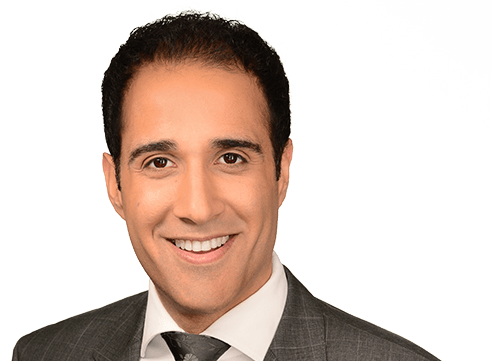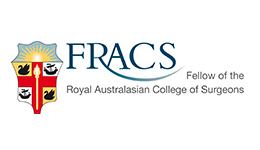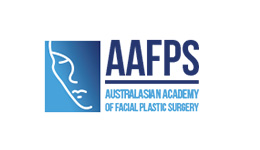Eyelid surgery
What can Eyelid Surgery do for me?
Blepharoplasty is a surgical procedure to remove excess fat and skin. Performed under general or local anaesthetics, this surgery can treat the upper eyelids, the lower eyelids, or both.
Upper Eyelid Surgery may:
- Remove excess skin in the upper eye lid
- Improve vision
Lower Eyelid Surgery may:
- Correct a falling lower lid
Eyelid Surgery Consultation with Dr Choroomi
Dr Choroomi appreciates your unique facial anatomy, therefor surgical treatment must be individually customised for each patient. During all cosmetic consultations all patients will undergo psychological screening and we may refer you to a psychologist. During your initial consultation for eyelid surgery, Dr Choroomi will:
- Examine the skin around your orbital area.
- Listen to your concerns.
- Discuss why you desire eyelid surgery, including expectations and desired outcomes.
- Explain eyelid surgery procedure and recovery
- Review your treatment options and answer and any questions.
How is Eyelid Surgery performed?
Upper Eyelid Blepharoplasty is performed by removing excess skin from the upper eyelid. Directly before the procedure, Dr. Choroomi will assess and mark the area of skin that is to be removed. This is done by pinching the eyelid to ensure the skin remaining is both aesthetically and functionally adequate. An incision is made in the natural crease of the eyelid, excess skin is removed and the incisions are closed with fine sutures to ensure scars are virtually invisible.
Lower Eyelid Blepharoplasty is performed through what is called the transconjunctival approach. This surgical approach involves placing an incision inside the lining of the lower eyelid, leaving no visible signs of scarring. The fat behind the muscle is either removed or repositioned onto the cheek. If necessary, excess skin will be removed from the lower eyelid and a tightening stitch, called canthopexy, is placed along the lash line.
Recovery After Eyelid Surgery
After upper and/or lower blepharoplasty surgery it is typically for your eyelids to feel tight and sore around the suture sights. Initially, you will need to apply cold compresses to your eye area to minimize bruising and swelling. You will also need to keep your head elevated, including while sleeping, for the first few days.
Patients can expect:
- Redness and swelling around the incision areas
- Minor swelling and bruising
- Tearing
- Sensitivity to light, wearing sunglasses will help
- Eye dryness which can be alleviated with ointment or eye drops.
Sutures for both upper and lower blepharoplasties will typically be removed 5-7 days after surgery. Most patients are ready to return to light activity, including work, in about 10 days. It is advised to wait three weeks before resuming more strenuous exercise
Risks and Complications
Your surgery will be performed safely and with care in order to obtain the best possible results.
You have the right to be informed that the surgery may involve risks of unsuccessful results, complications or injury from both known and unforeseen causes. Because individuals vary in their overall health and healing abilities, skin texture, anatomy, circulation and the way they react to medications and anesthesia, there can be no guarantee made as to the results of surgery. Furthermore, there always exists the potential for complications.
The following complications of blepharoplasty surgery have been reported in the medical literature. They are listed here for your information, not to frighten you, but to make you aware and more knowledgeable concerning this surgical procedure. The list below includes most complications that are encountered, but it is not all-inclusive.
If you have any questions regarding the potential complications listed, please discuss them with Dr Choroomi prior to your procedure.
Scarring
The incisions will go through a period of healing that will take a minimum of three months until they look and feel as hoped for. Rarely (1-3%) a firm, visible scar may result. There are many things which can be done to improve such scars, but these depend on the healing abilities of the particular patient, which are not entirely predictable.
Lagophthalmos
(Inability to close eyes). This is very rare. If present initially, it usually resolves in a matter of weeks to months. Persisting problem may require surgery.
Dry Eye
If pre-existing, this condition can worsen. Usually this condition is temporary, but it may persist indefinitely. Corneal exposure may require treatment.
Swelling and Bruising
Normally lasts for 2 weeks, but may take longer. Occasionally people develop longstanding discoloration under the eyes which may be difficult to correct.
Ectropion.
Lower eyelids may be pulled downwards, showing more of the eye than before surgery. This occurs from wound contracture as part of the healing process, and although it may correct itself, it may require surgery to repair.
Lumpiness
May occur from the persistence of fat under the skin. This is extremely rare in standard cases where fat is removed; but may be more common when the fat is repositioned.
Loss of Eyelashes or Brow Hairs
Rare
Pain and Light Sensitivity
Usually is moderate for 24-36 hours, then will go away entirely.
Infections
Extremely rare in this surgery.
Visual Change
Blurred vision may result from swelling of the conjunctiva, increased tear production, decreased tear drainage, ointment or weak muscles. All of these usually improve rapidly and vision should return to its normal pre-operative state.
Blindness
Has been reported in literature as a rare complication. Usually from unrecognised or untreated bleeding into the orbit (hematoma). Potentially avoidable complication even in bleeding occurs.








